Wave Winding
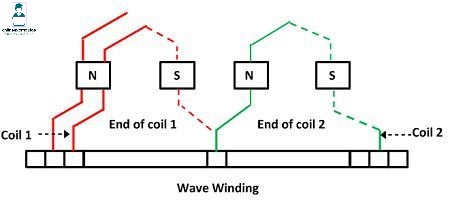
Table of Contents
Wave Winding, progressive winding, retrogressive winding
Wave Winding
Only two parallel paths are offered between the positive and negative brushes in wave winding. The starting end of one armature coil’s commutator segment is connected to the finishing end of the other armature coil at a slight angle.

In high-voltage applications, dc generators use this kind of winding. Keep in mind that the commutator segments at the two ends of each coil are connected and spaced apart by the distance between the poles. All voltages in the windings between the brushes may be added in series with this configuration. Only one set of brushes are needed for this kind of winding. A practical generator might have multiple pairs in order to enhance commutation. A wave or series winding forms when the coils’ end connections are spaced apart as depicted in Figure.
Regardless of the quantity of poles, there are only two paths in a wave winding. As a result, this type of winding only needs two brushes, though it may employ as many brushes as poles. It is referred to as wave winding because the winding moves around the armature in a single direction in a series of ‘waves’. The winding is said to be retrogressive if, after going once around the armature, it lands in a slot to the left of where it started. But if it moves one slot to the right, it becomes progressive.
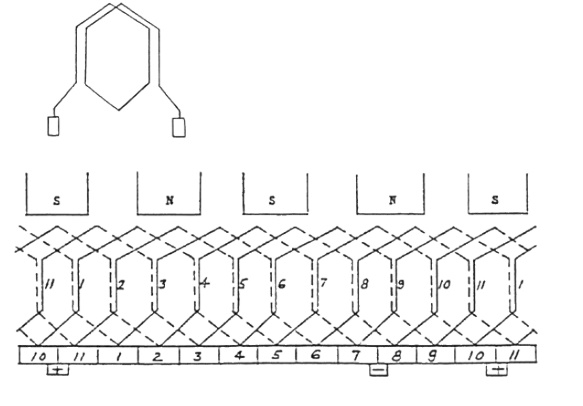
1. YF are odd and of the same sign.
2. Back and front pitches are nearly equal to the pole pitch and may be equal or differ by 2, in which case, they are respectively one more or one less than the average pitch.
3. Resultant pitch YR = YF + YB.
4. Commutator pitch, YC = YA (in lap winding YC = ±1 ). Also YC = (No.of commutator bars ± 1 ) / No.of pair of poles.
5. Average pitch which must be an integer is given by YA = (Z ± 2)/P = (No.of commutator bars ± 1)/No. of pair of poles.
6. The number of coils i.e NC can be found from the relation NC = (PYA ± 2)/2.
7. It is obvious from 5 that for a wave winding, the number of armature conductors with 2 either added or subtracted must be a multiple of the number of poles of the generator. This restriction eliminates many even numbers which are unsuitable for this winding.
8. The number of armature parallel paths = 2m where ‘m’ is the multiplicity of the winding.
Regardless of the machine’s number of poles, this winding connects the conductors to two parallel paths. The number of parallel paths is equivalent to the number of brushes. High voltage, low current machines are the main application for the wave winding.
The armature winding is said to be retrogressive winding if, after one cycle, it enters a slot to the left of its initial point.
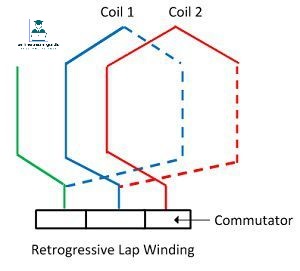
Progressive winding is the term used if the armature windings fall on a slot to the right.
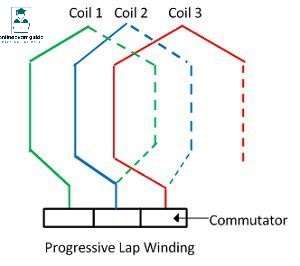
Consider a winding with two layers and assume that the conductor AB must be in the upper layer half of the slot on the left or right. Assume that the front pitch is the YF and the back pitch is the YB. The back pitch plus the front pitch add up to almost exactly the winding’s pole pitch.
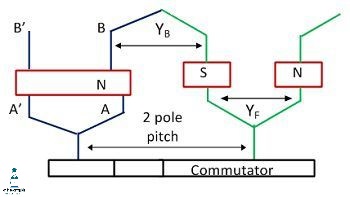
The equation gives average pitch of the winding

If ZA is the total number of conductor or coil side, then the average pitch is expressed by the equation,

Where, P – number of poles
Since P is always even, then Z = PYA ± 2, will always be considered as an even integer.
So For progressive winding plus sign will use and for retrogressive winding negative winding will be used.